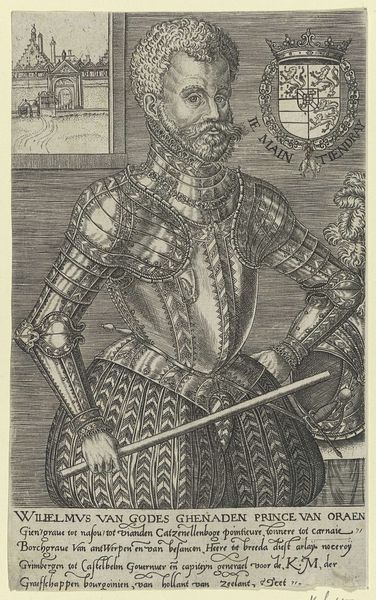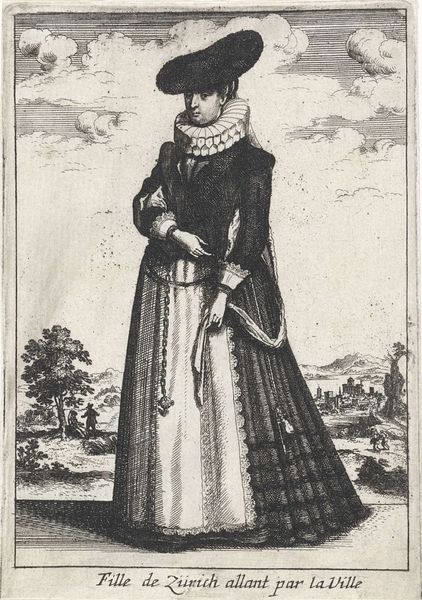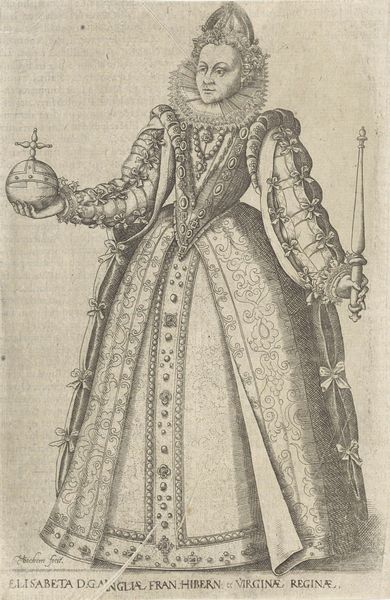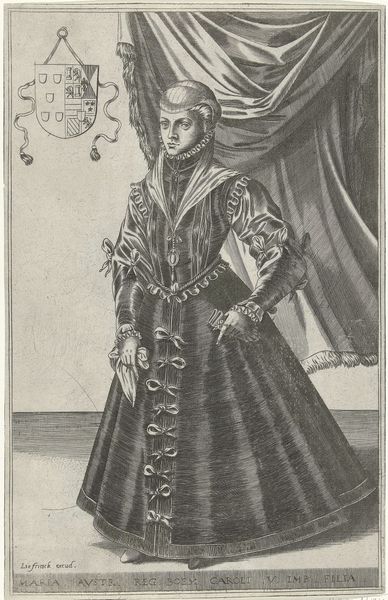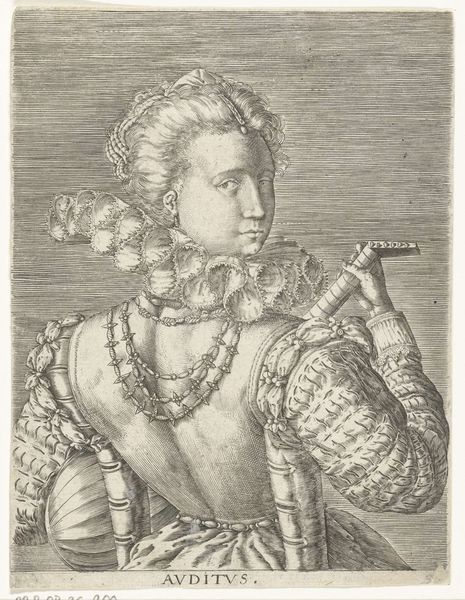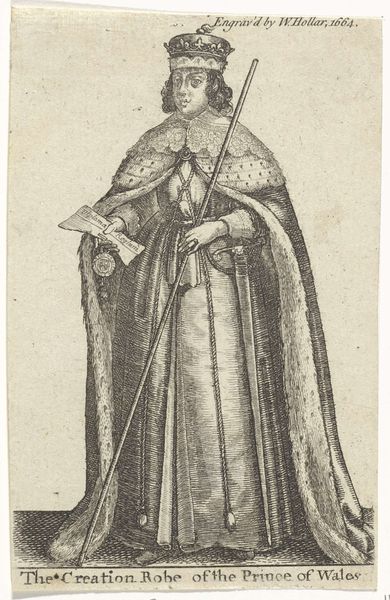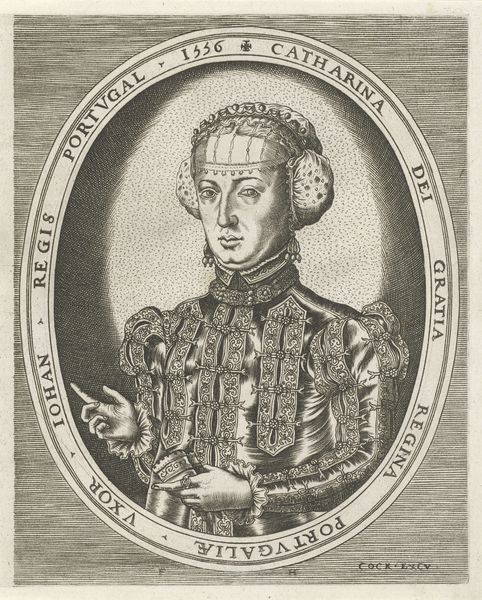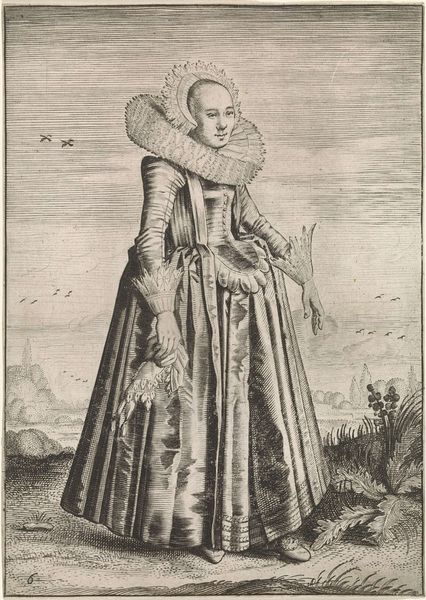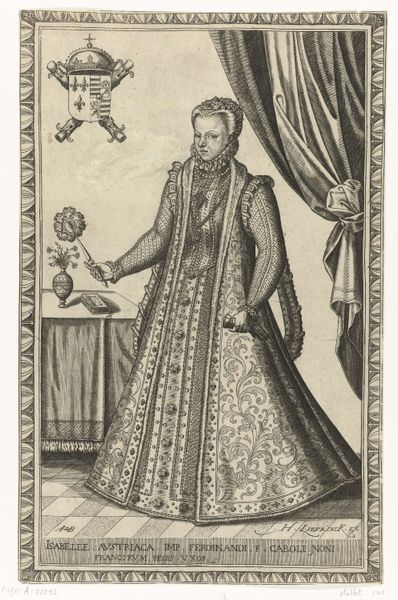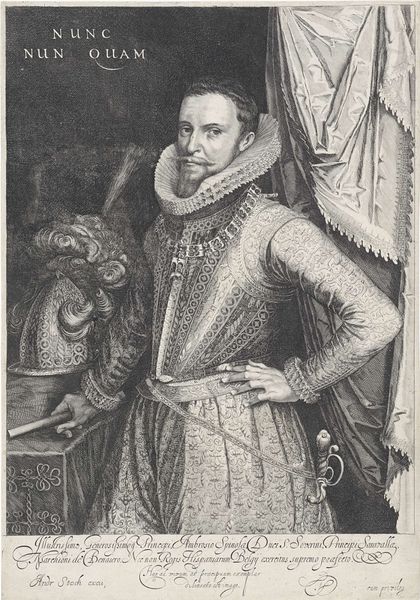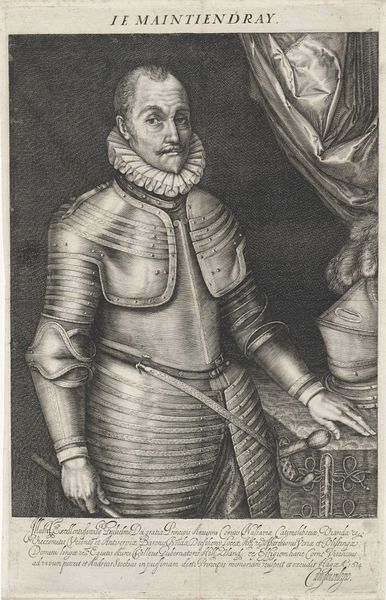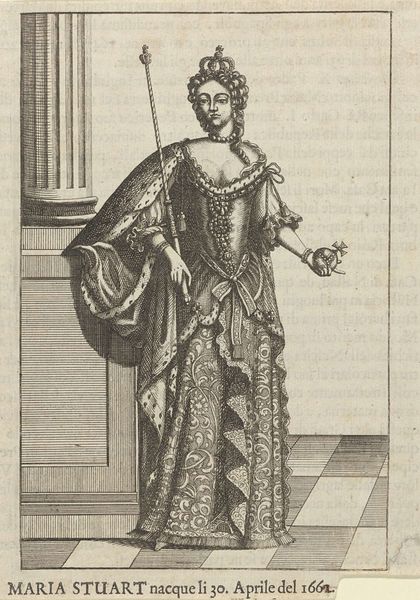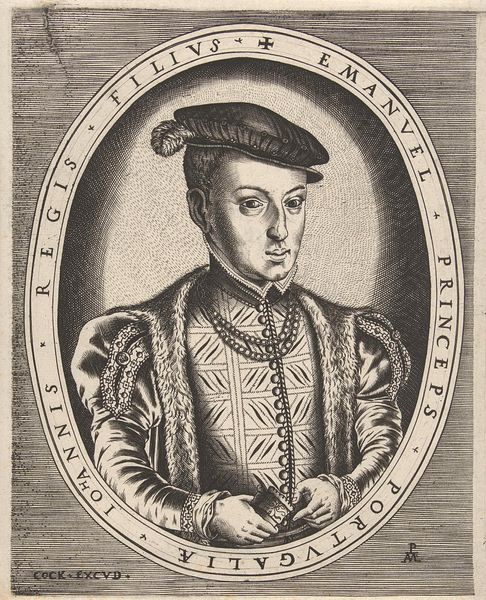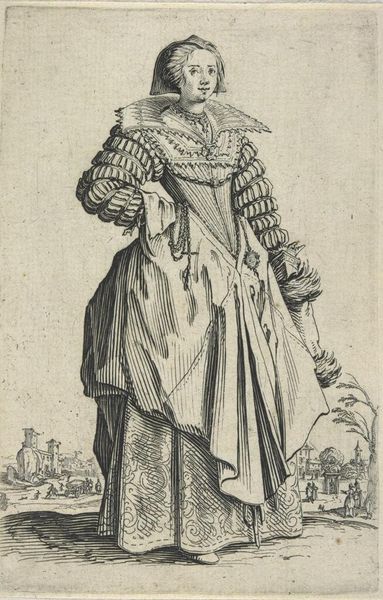
print, intaglio, engraving
#
portrait
# print
#
intaglio
#
old engraving style
#
figuration
#
history-painting
#
northern-renaissance
#
engraving
Dimensions: height 185 mm, width 112 mm
Copyright: Rijks Museum: Open Domain
Editor: Here we have a print entitled "Portret van Anna van Saksen," made by Abraham de Bruyn sometime between 1565 and 1568. It's an intaglio engraving. What immediately strikes me is the formality and the intense detail in her clothing. How do you interpret the symbols and imagery present here? Curator: The visual language in this piece speaks volumes, doesn't it? Let's begin with Anna herself. The high ruff, the ornate dress, the jeweled headdress—these aren’t merely fashion statements. Each element signifies her elevated social status, wealth, and connection to the Saxon nobility. The family crest positioned above her head cements this association. Notice too the small object in her hand – likely a pomander or jewel. It represents not only affluence but also potentially, power and authority. Do you see a continuity between these symbolic items and the historical perception of royalty and lineage? Editor: Yes, absolutely. They all reinforce the idea of inherited status and power. The engraving itself, with its precise lines, feels very deliberate, almost like it's trying to freeze a specific image of Anna in time. Curator: Precisely. Consider the intent. Prints like these were often commissioned to disseminate images of important figures, solidifying their image, influencing public perception, and weaving them into the narrative of their time. What does it tell us about Anna's place within her society, do you think? Was she a beloved figure, or perhaps a controversial one, requiring careful management of her public image? Editor: That’s a fascinating point. The detail and formality suggest she held a position where her image mattered, and this print served to solidify her place in history. It does make me wonder what the broader narrative around her was at the time. Curator: Exactly. This print is not simply a portrait; it is a carefully constructed symbol meant to transmit specific messages across time, continuing her presence and meaning. Now, reflect on how symbols function even today – are we not continually creating, interpreting, and disseminating images that shape our understanding of the world and its narratives?
Comments
No comments
Be the first to comment and join the conversation on the ultimate creative platform.
